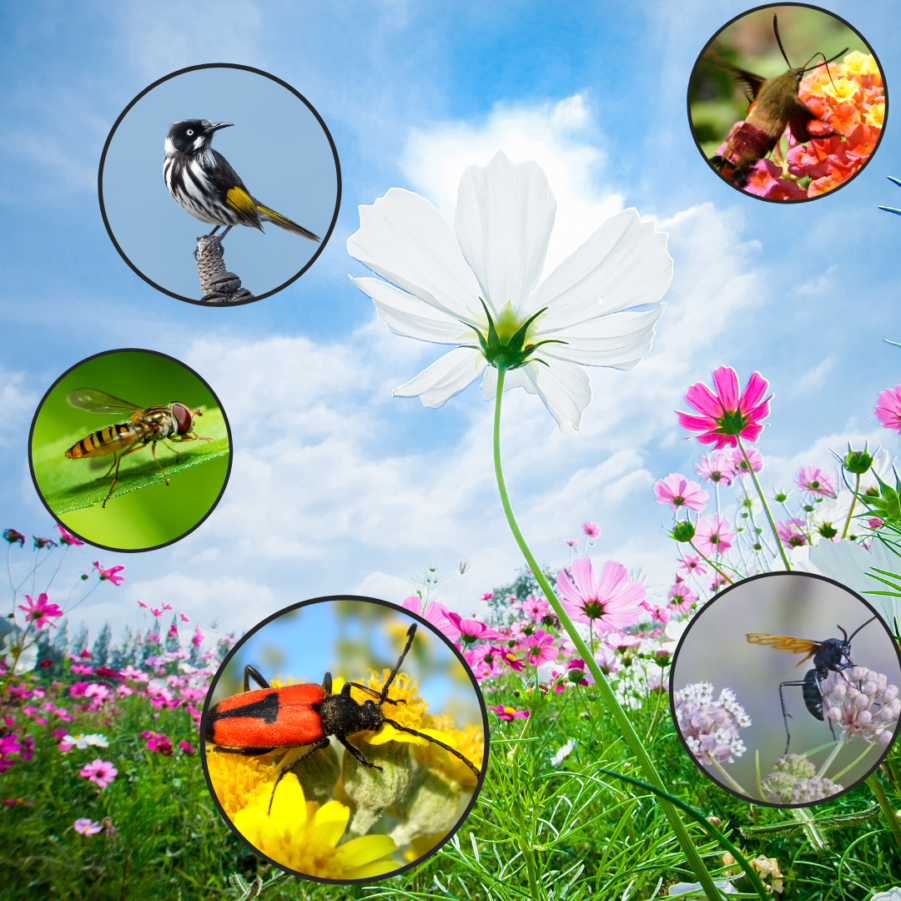When you hear the word pollinator, often the first image that comes to mind is a bee. With good reason, too: bees are common pollinators in many natural habitats and are easy to recognize. However, they don’t deserve all the credit. There are plenty of other neat animals out there putting in the work and getting far less attention for it. Recently, a reader asked if I would feature some of these unsung heroes on Gulo in Nature. So, in this Naturalist Answers post, let’s get to know some pollinators other than bees.
Insect pollinators other than bees
Insects are some of the most abundant and diverse living things on the planet. Even ignoring the 85,000 species of bees, many of which are top-notch pollinators, insects are indispensable for pollination. So it makes sense to start with other examples of insect pollinators first, before we move to larger animals.
Want to learn more about different kinds of insects you might encounter on your nature adventures? Check out my post on common orders of insects every nature lover should know.
1. Moths and Butterflies (Lepidoptera)
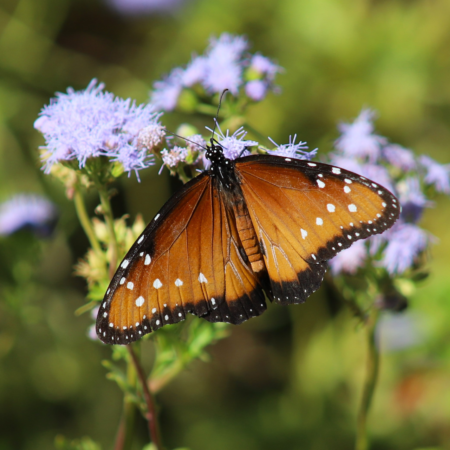
The order lepidoptera includes both butterflies and moths, many of which are frequent flower visitors. To learn more about the difference between butterflies and moths, check out this post.
Both butterflies and moths visit flowers for their sugary nectar, which serves these and other insects as fuel.
Butterflies are often the more obvious of the two for people, since they are bright, colorful, and active during the day. Typically standing tall on long legs, butterflies perch on flowers and use their long proboscis to drink nectar from flowers. Their legginess and straw-like mouthparts keeps butterflies’ bodies further from the pollen stored within the flower. Because of this, they don’t tend to get as much pollen on their bodies as other insects. This means that they are sometimes less efficient pollinators than bees. However, their bulky wings tend to brush up against flower parts and move pollen around readily.
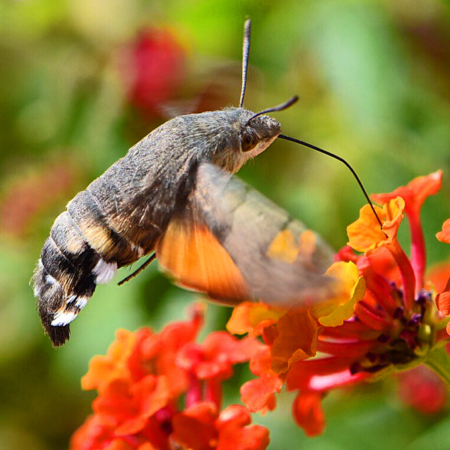
While not all moths eat nectar (in fact, many don’t eat at all as adults!), the sphinx moth family Sphingidae are bigtime sugar addicts. People from the Western hemisphere often confuse these large, buzzy moths, also known as hawk moths, with hummingbirds! With that in mind, it’s no surprise that another name for sphingids is “hummingbird moths”.
Sphinx moths are adept at hovering near flowers and using their long proboscis to drink nectar without ever landing. Those probosces can be huge! Wallace’s sphinx moth (Xanthopan praedicta), an important pollinator in Madagascar, holds the record for “longest insect tongue“. Its proboscis can be more than four times its body length, a wopping 11 inches (~28cm).
2. Beetles
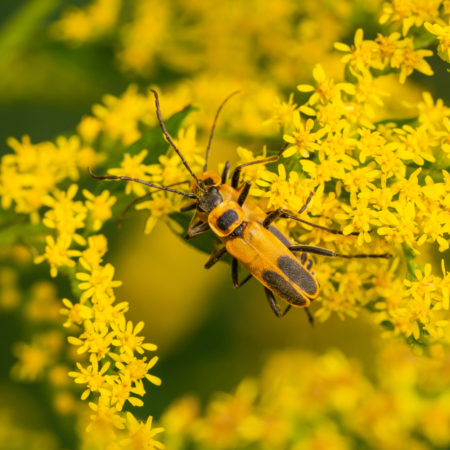
I often refer to beetles as the “O.G.” of insect pollinators, because they have been in the business for a long time. In fact, they were pollinating ancient flowers like magnolias before bees even existed! The fossil record shows evidence of beetles pollinating prehistoric flowering plants as early as the end of the Jurassic period, over 150 million years ago.
While they do feed on nectar, many beetles are more interested in actually eating the pollen itself. Given their large bodies and voracious appetites, it makes sense that they would want to eat protein-packed pollen given the chance. Beetles are bulky, clumsy fliers and messy eaters. As a result, even though they are eating plenty of pollen, they get it all over themselves. When they fly to another flower, they transfer some of this pollen along.
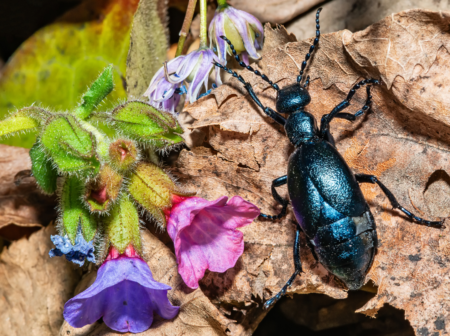
Of course, scarfing down pollen doesn’t seem like it makes a good pollinator, but plants often produce far more pollen than is necessary to pollinate nearby flowers of the same species. Only a single grain is needed to pollinate the female part of one flower. So even though beetles consume large amounts of pollen, they can easily move the necessary amount to keep healthy plant populations.
One major group of beetle pollinators belong to the long horned beetle family Cerambycidae. Many subgroups within this family love flowers, and are easy to find in Summer and early Fall on plants like goldenrods. Oil beetles (Meloidae) are also common pollen-chompers. Check out my short podcast episode in collaboration with the Montana Natural History Center to learn more about these amazing bugs.
3. Flies
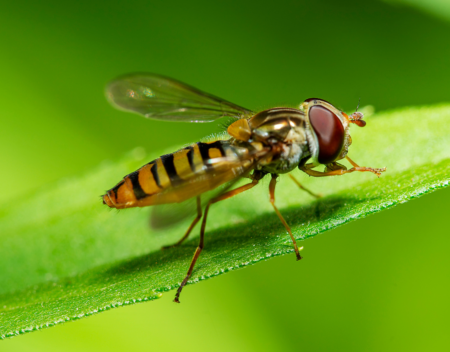
Believe it or not, flies are the second oldest in the business of pollination, after beetles. This might come as a surprise, since most of us think of them as pesky household insects. Although carrion flies (Calliphoridae) and house flies (Muscidae) are absolutely gross and hard to love, other types of flies are much more interested in nectar than your pastrami sandwich.
The flower flies (Syrphidae), also known as hoverflies, are often beautiful flies that are expert nectar-feeders. Having somewhat hairy bodies, they are also pretty good pollinators. In a great example of Batesian mimicry, many of these flies closely resemble bees. Bees’ special black-and-yellow stripe pattern is a form of aposematic coloration, a warning that tells others to stay away or get stung. Flower flies that look like bees a distinct advantage: other animals, including people, are less likely to bother them!
4. Wasps

Speaking of warning signals, the wasps, a group of insects in the same order as bees, also uses their warning signals. And with good reason! Wasps often have more potent and painful stings than bees, and can sting multiple times when agitated. At certain times of year, wasps can also be particularly aggressive.
Like bees, wasps visit flowers in search of sweet and energy-rich nectar. However, for many species, this is just part of a complete breakfast. Wasps are carnivorous, getting most of their nutrition by eating carrion or hunting smaller prey.
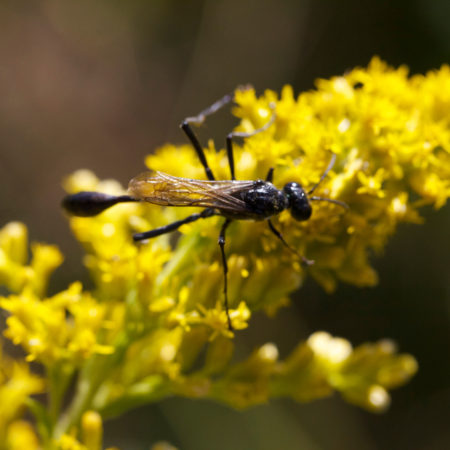
Being sleeker and less hairy than bees, wasps aren’t likely to carry as much pollen as bees. This probably makes them less efficient pollinators. However, they still make decent pollinators. Meanwhile, if you find them pollinating plants in your garden, don’t panic! Wasps are excellent natural enemies, insects that eat and control garden pests. Spotting them in your own outdoor spaces is a great sign for a healthy wildlife garden!
More pollinators other than bees
Although insects “carry the team” with respect to global pollination, there are some other animals who are certainly worth mentioning. As you might have noticed with the insects, the ability to fly is a major prerequisite for good pollinators. Why? Because it’s easier to get around! Flying animals can move quickly between flowers and transport pollen long distances.
Aside from the insect, two other groups of animals on our beautiful planet have mastered the skies: bats and birds.
5. Bats

Although the vast majority of bat species are helpful insect eaters, there’s a big contingent with a sweet tooth. These nectar fiends often have long tongues for lapping up nectar from specially adapted flowers, and have a keen sense of smell to find flowers at night. Nectar feeding bats are often excellent at hovering so that they don’t have to perch on flowers and risk falling. Bat pollination is most common in desert and tropical areas, particularly in North and Central America, as well as Africa and Southeast Asia and many Pacific Islands.
While insects’ small size lets them feed on a wide variety of flowers, most nectar feeding bats only visit flowers that are specially adapted for bat pollination. This means that they have tightly knit relationships with certain plant species, and the two depend on each other. Being hairy and relatively messy eaters, bats can get their foreheads and faces covered in pollen, making them very effective pollinators.

One fun example of a close bat-plant relationship is the agave plants responsible for making tequila. These cool desert plants have tall flowering stalks with fragrant, pale, night-blooming flowers. These adaptations make it easy for long-nosed bats (genus Leptonycteris) to find and drink from their flowers.
Want to learn more about bats? Check out 17 nature facts about bats for awesome bat trivia. If you’re interested in seeing more bats around where you live, have a look at my bat house guide.
6. Birds
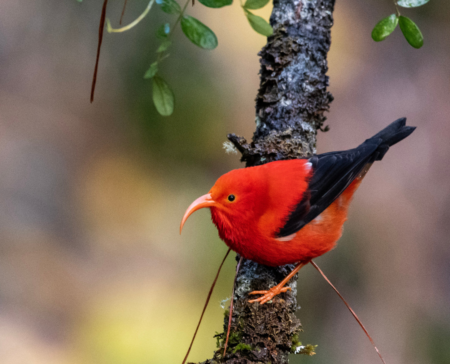
When it comes to flower pollination, birds are no slouches either. If you live in some temperate biomes of the world, your common backyard birds might not include bird pollinators. However, there are some relatively widespread groups sporting some really gorgeous animals. Nectar-feeding birds are often extremely energetic and a great many are vibrant in color. Having color vision a lot like ours, they are often attracted to bright, often red flowers, and don’t typically follow their nose to find food. The main bird families that rely most heavily on nectar are:
- Hummingbirds (Trochilidae)
- Honeycreepers (Drepanidae)
- Sunbirds (Nectariniinae)
- Honeyeaters (Melophagidae)
Additionally, some parrots like lorikeets (tribe Loriini) feed on nectar as part of a broader diet. They no doubt do some pollination as well, but don’t rely on flowers as heavily as other nectar feeders.
Hummingbirds are one of the best known bird pollinators. These aggressive, colorful birds live life at a fast pace, beating their wings up to 4,000 strokes per minute. Like other nectar feeding birds, they have long, bristly tongues that can efficiently lap up nectar from flowers. Want to learn how to attract hummingbirds to your yard? Check out this handy guide!
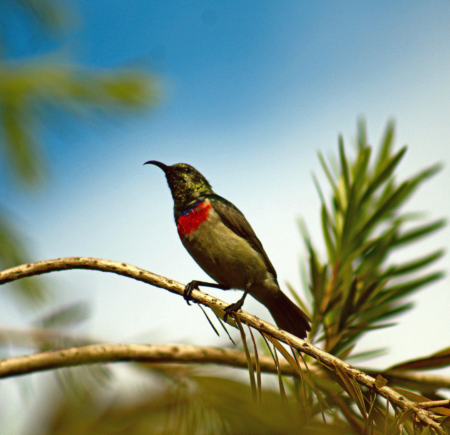
Sunbirds are the equivalent of hummingbirds in Africa and Asia. They are also adept at hovering, although they don’t have quite the same insect-like flight as hummers. Like the honeyeaters of Australia and South Asia, they are a diverse group, with over 150 species!
The honeycreepers of Hawai ‘i are another great example of pollinators other than bees. These gorgeous animals are true emblems of Hawaiian nature and culture. Unfortunately, these iconic and colorful birds are unfortunately heading toward extinction due to climate change and invasive species.
Thanks for reading about pollinators other than birds!
Got another reader request for a post in Gulo in Nature? Drop us a line using the Contact page. If you enjoyed this post and want to support Gulo in Nature, please share this blog with friends via social media.

